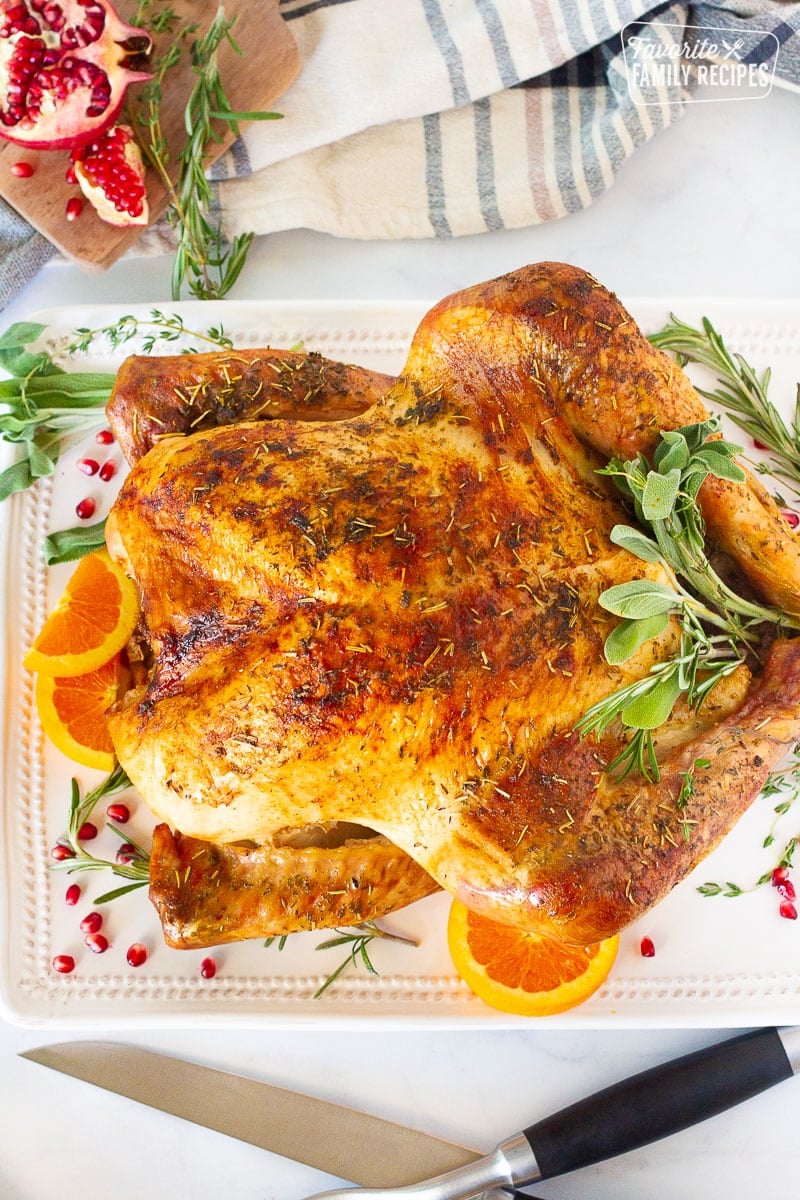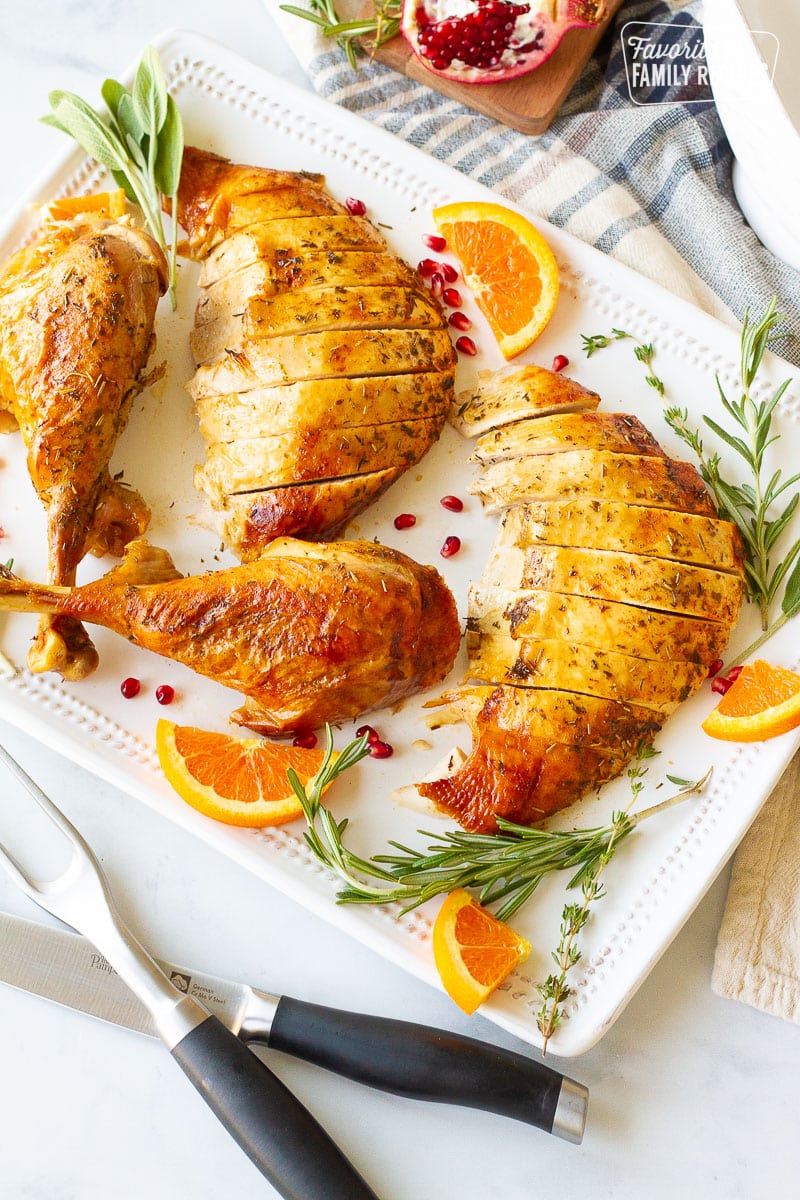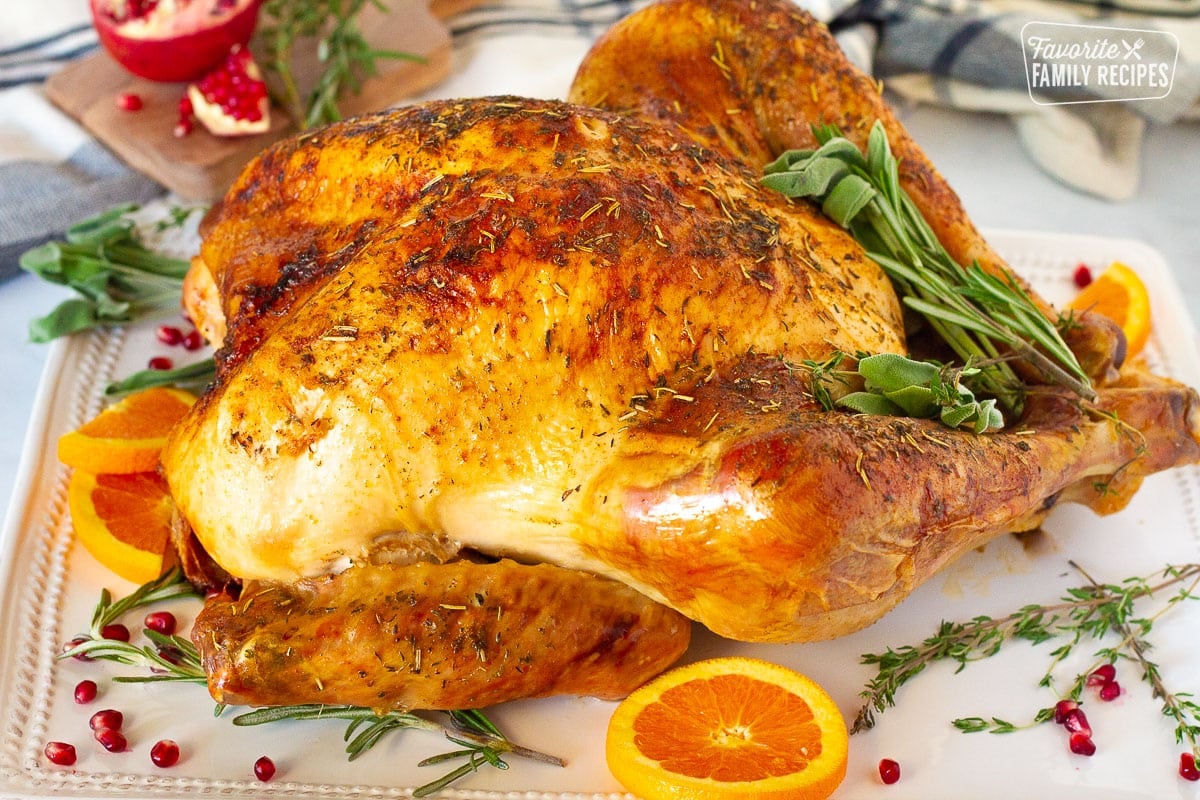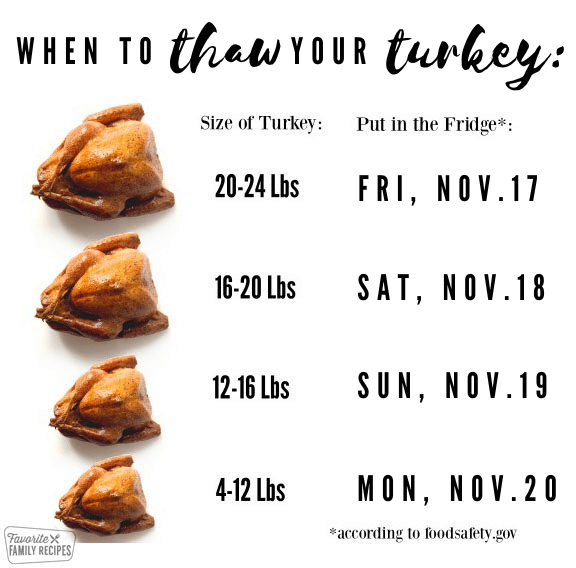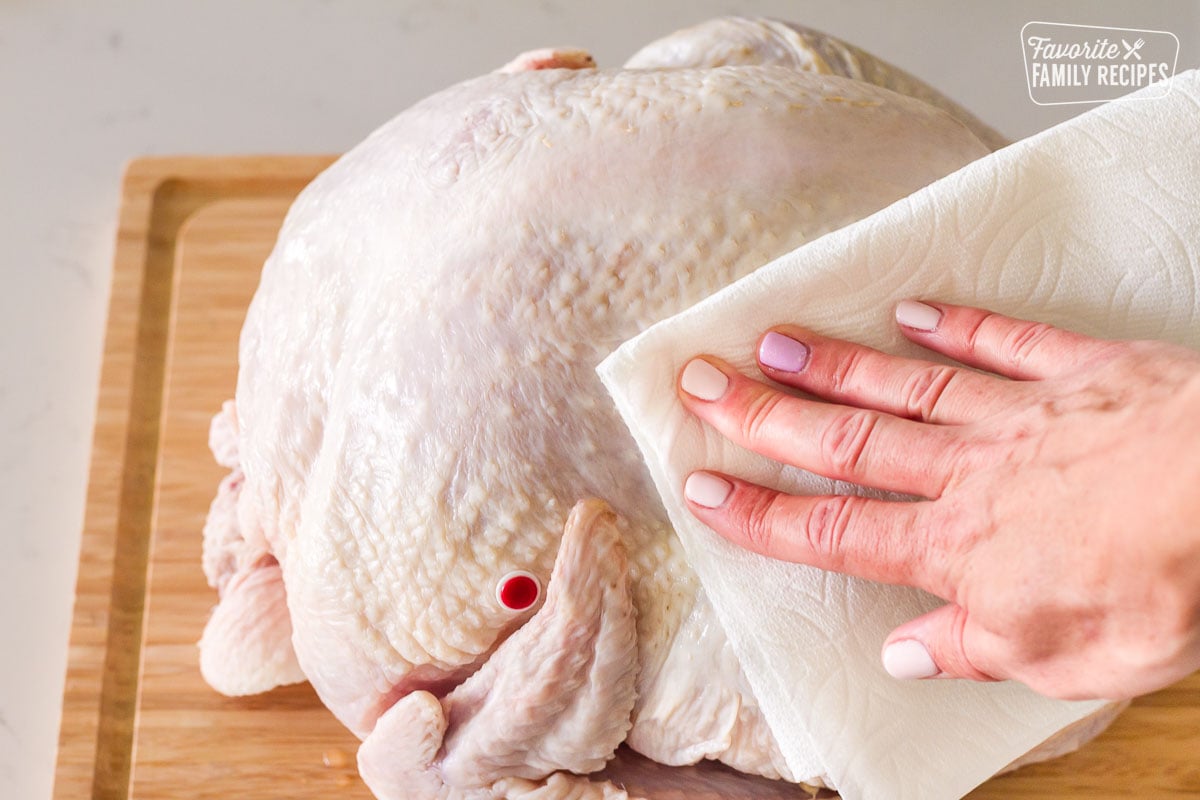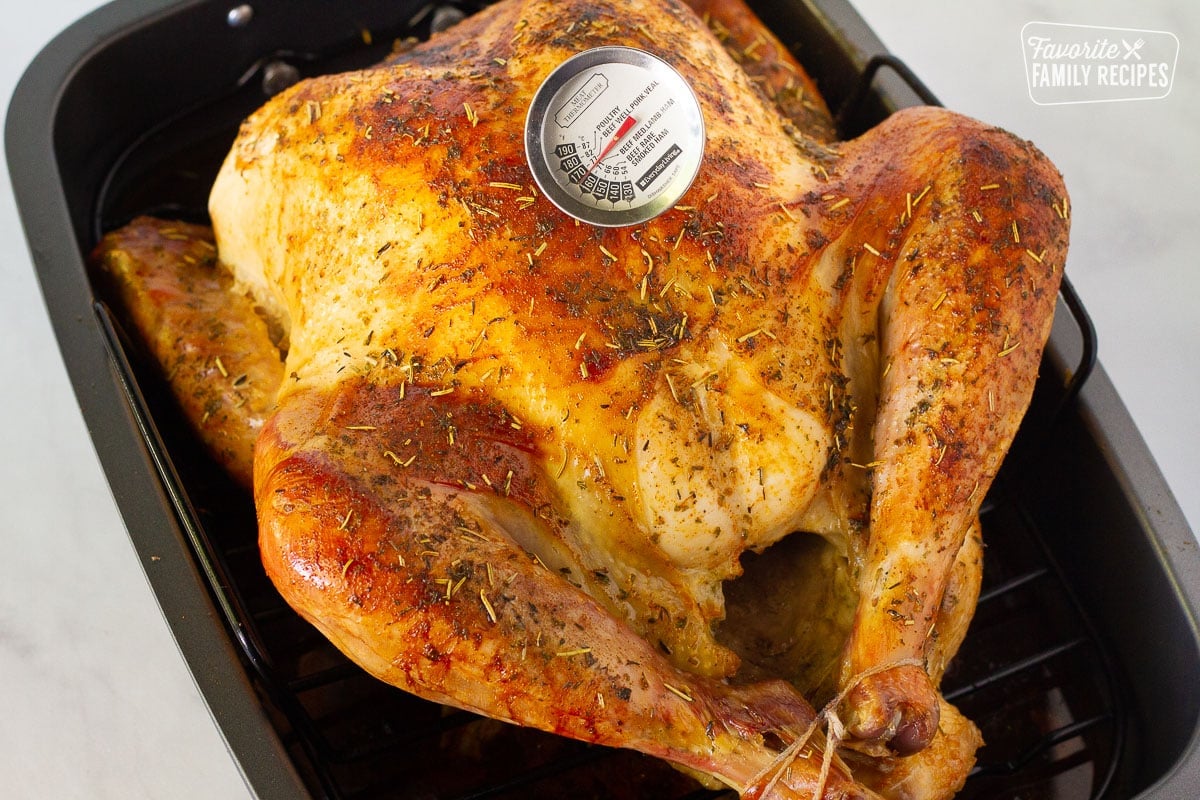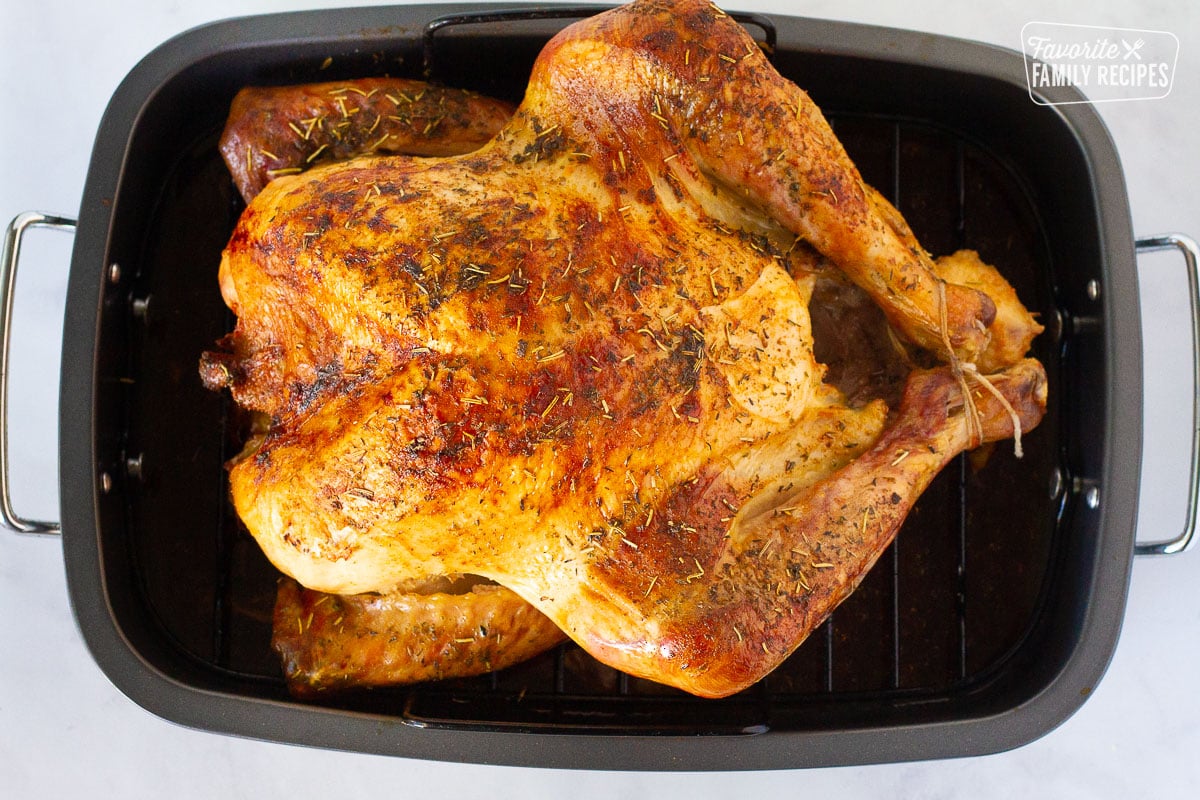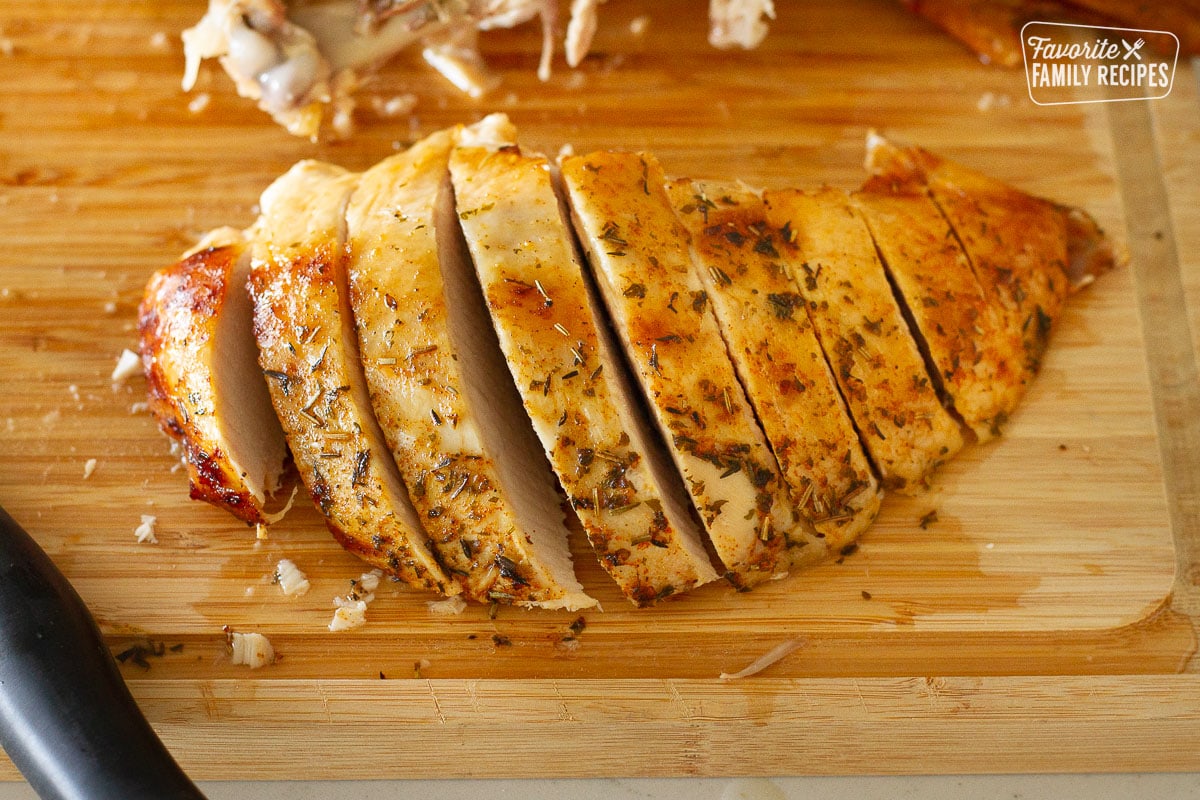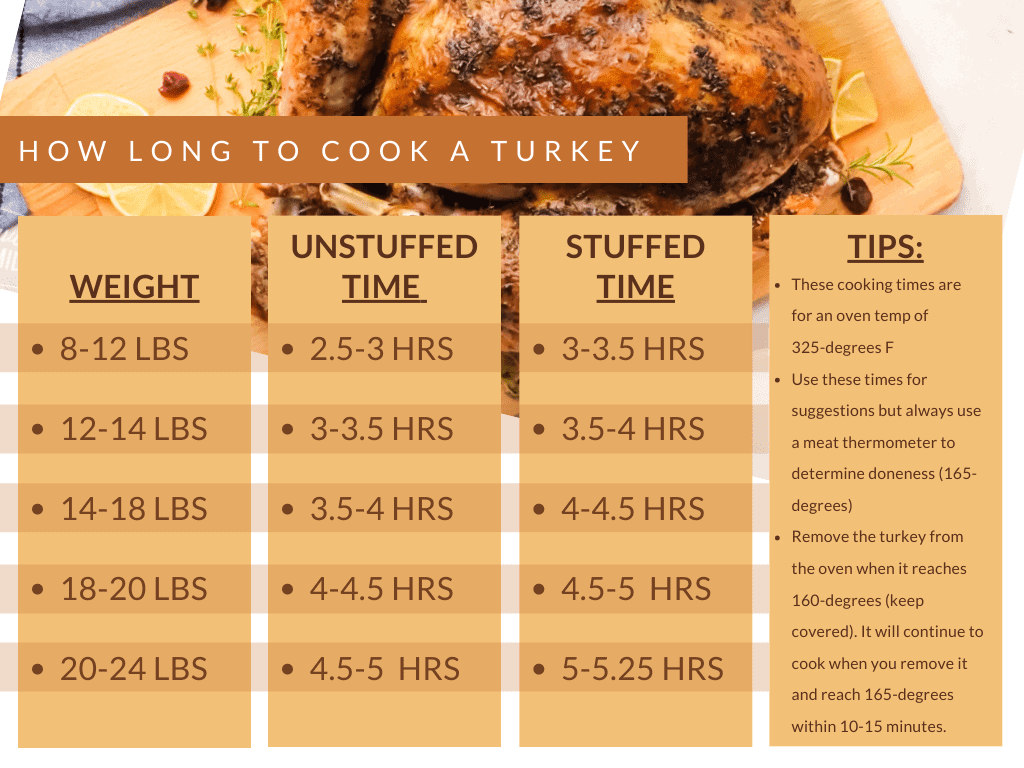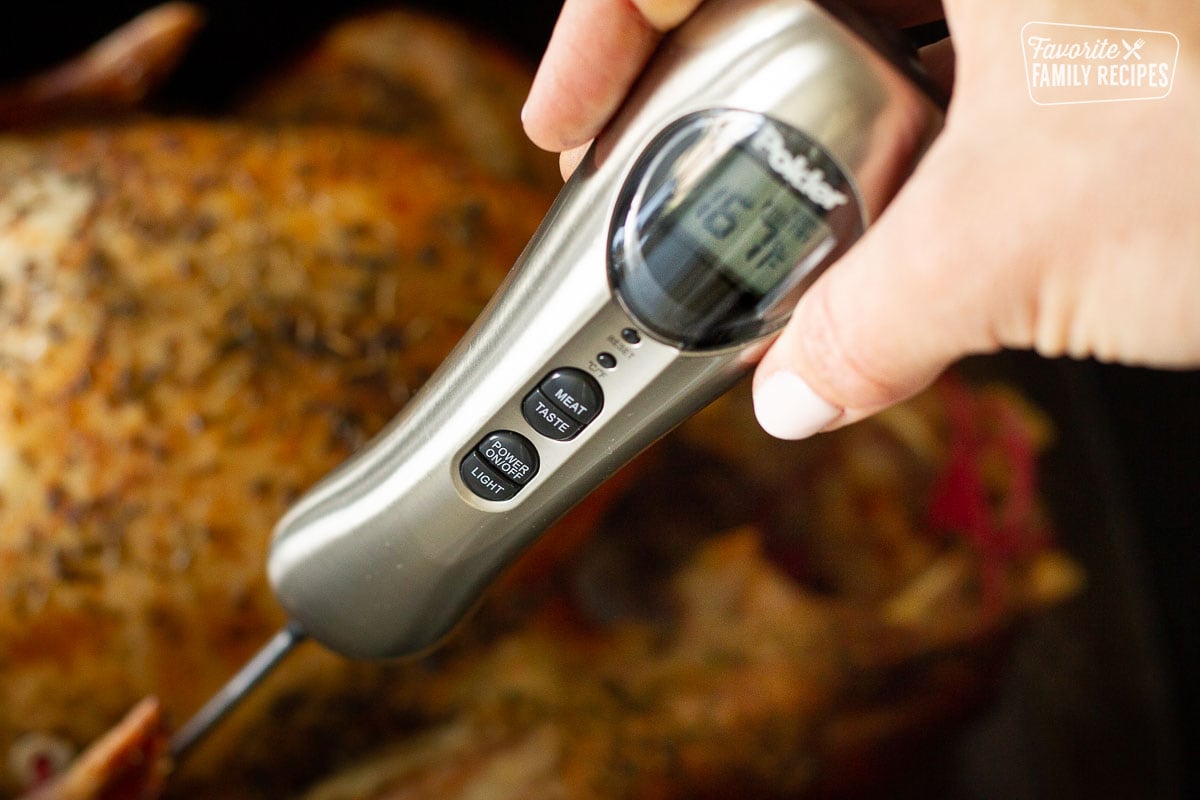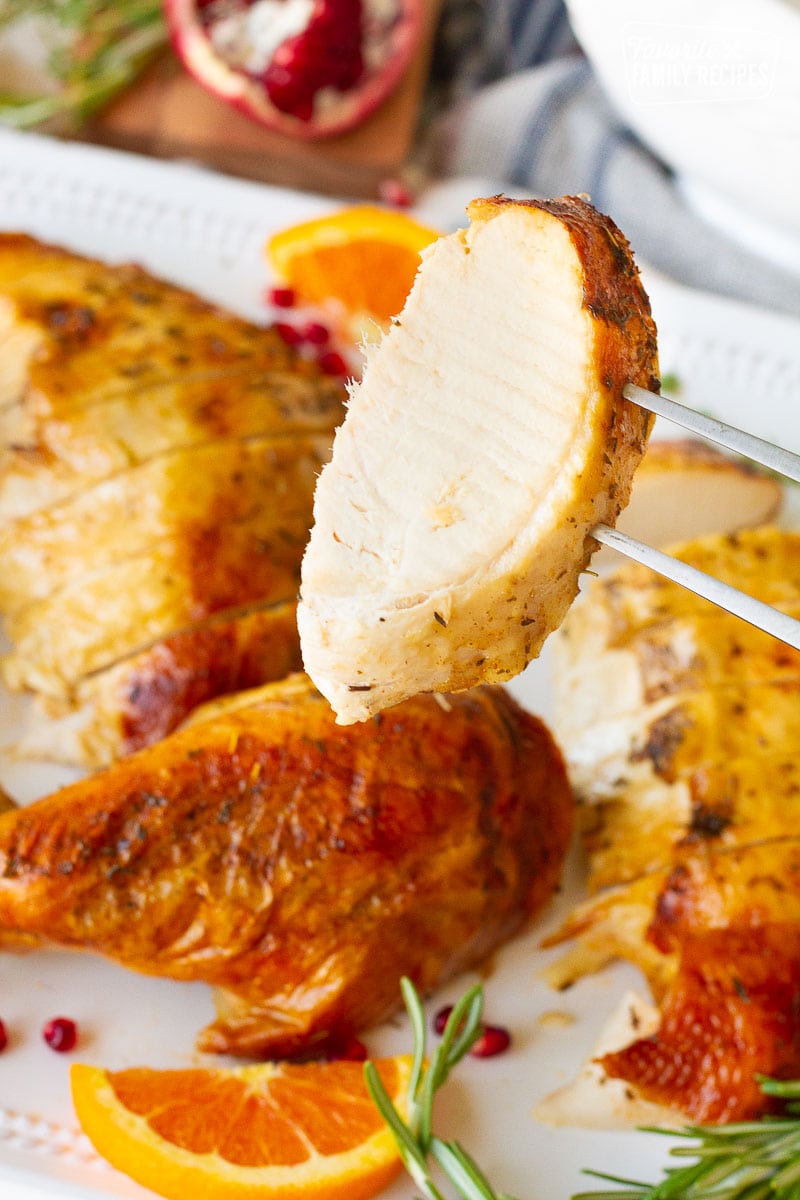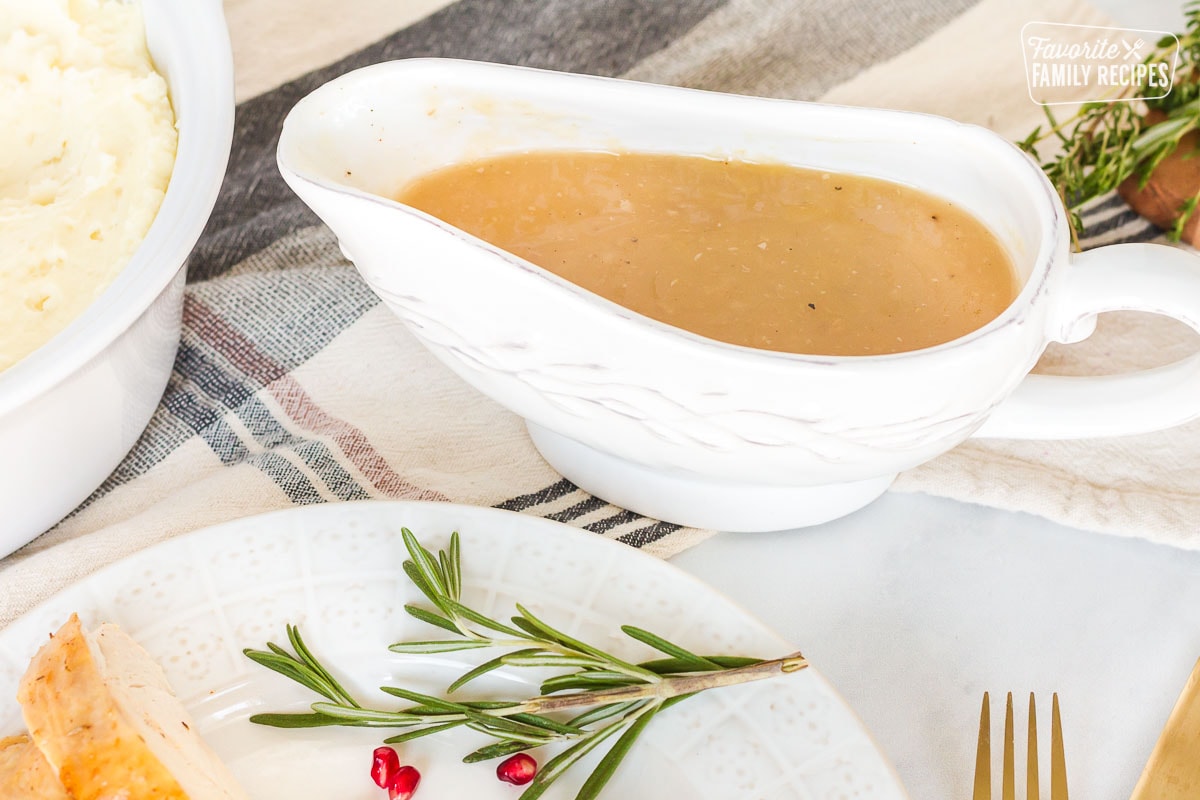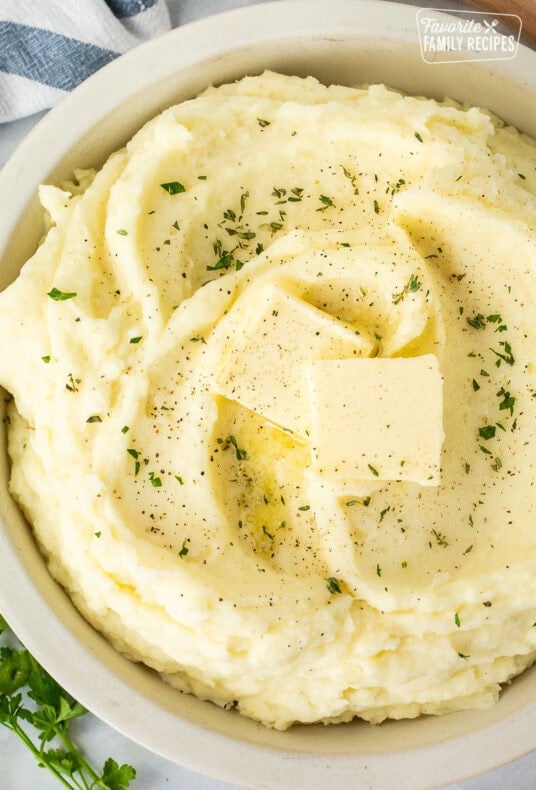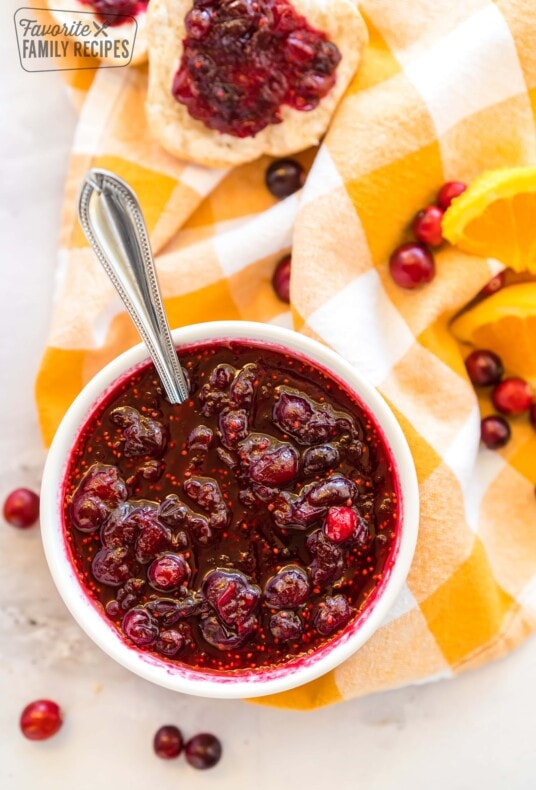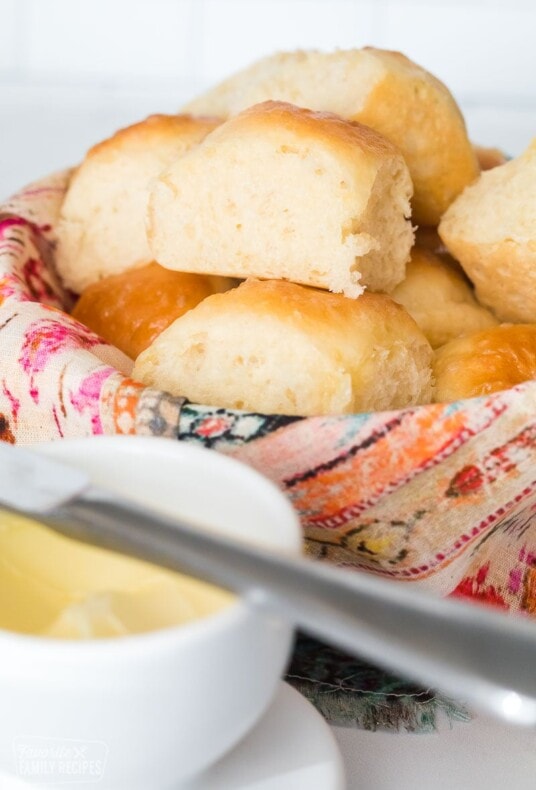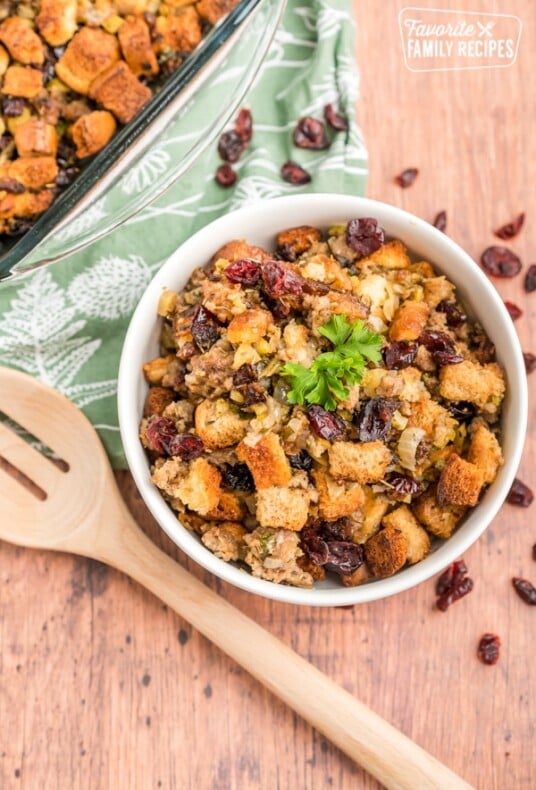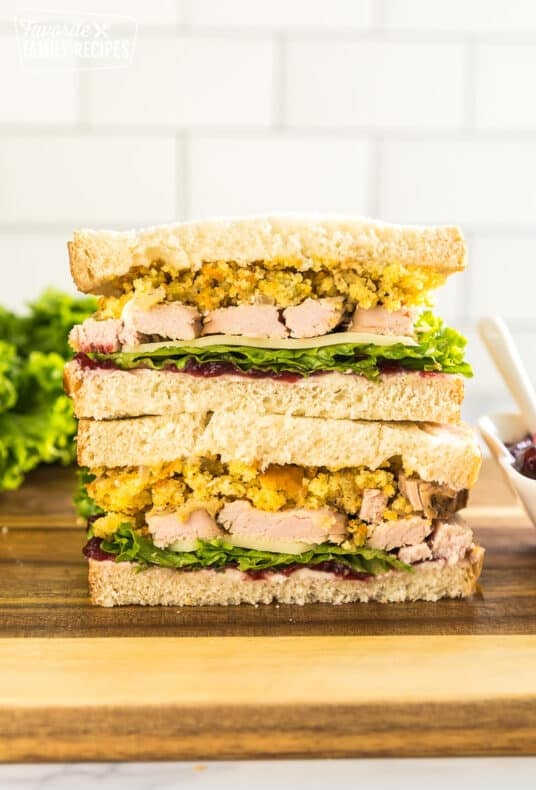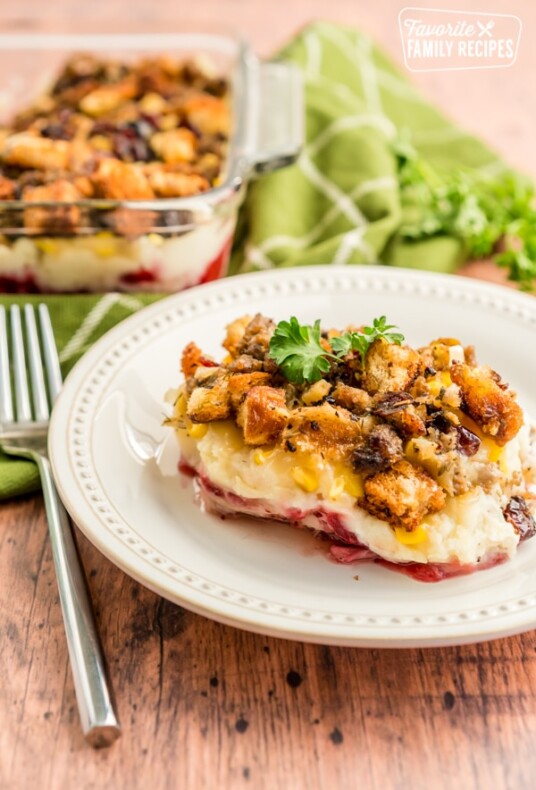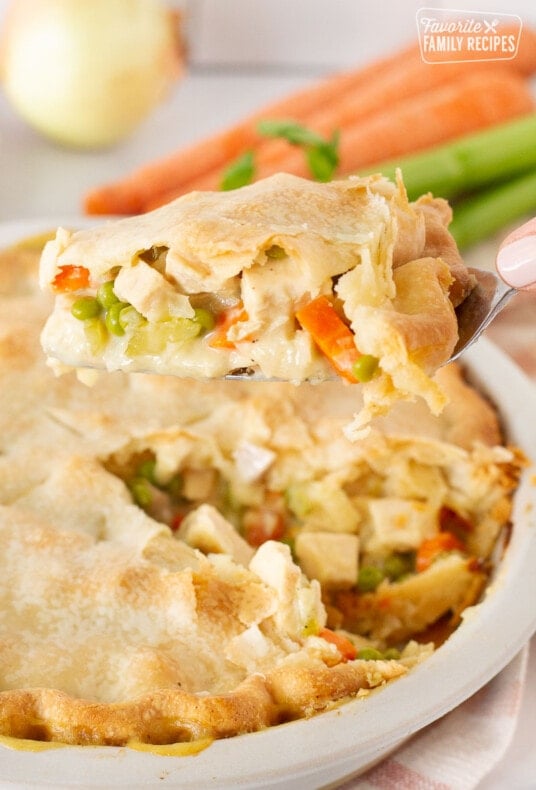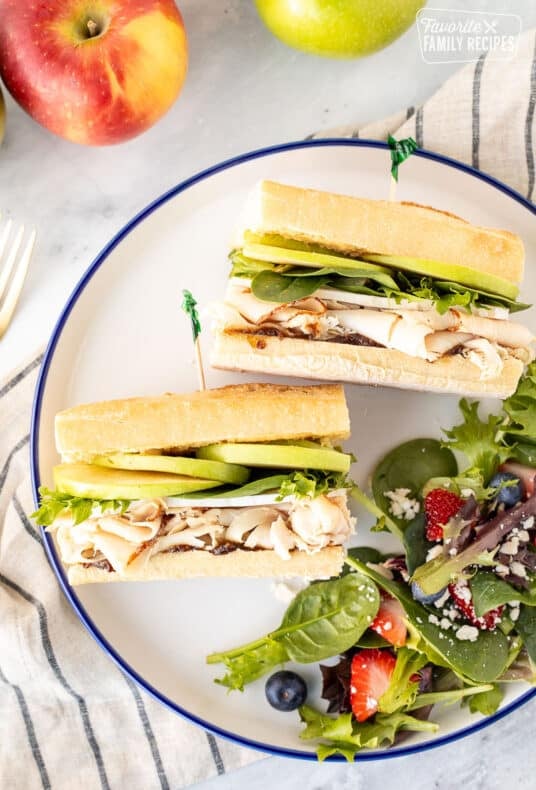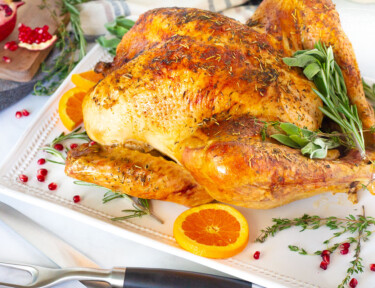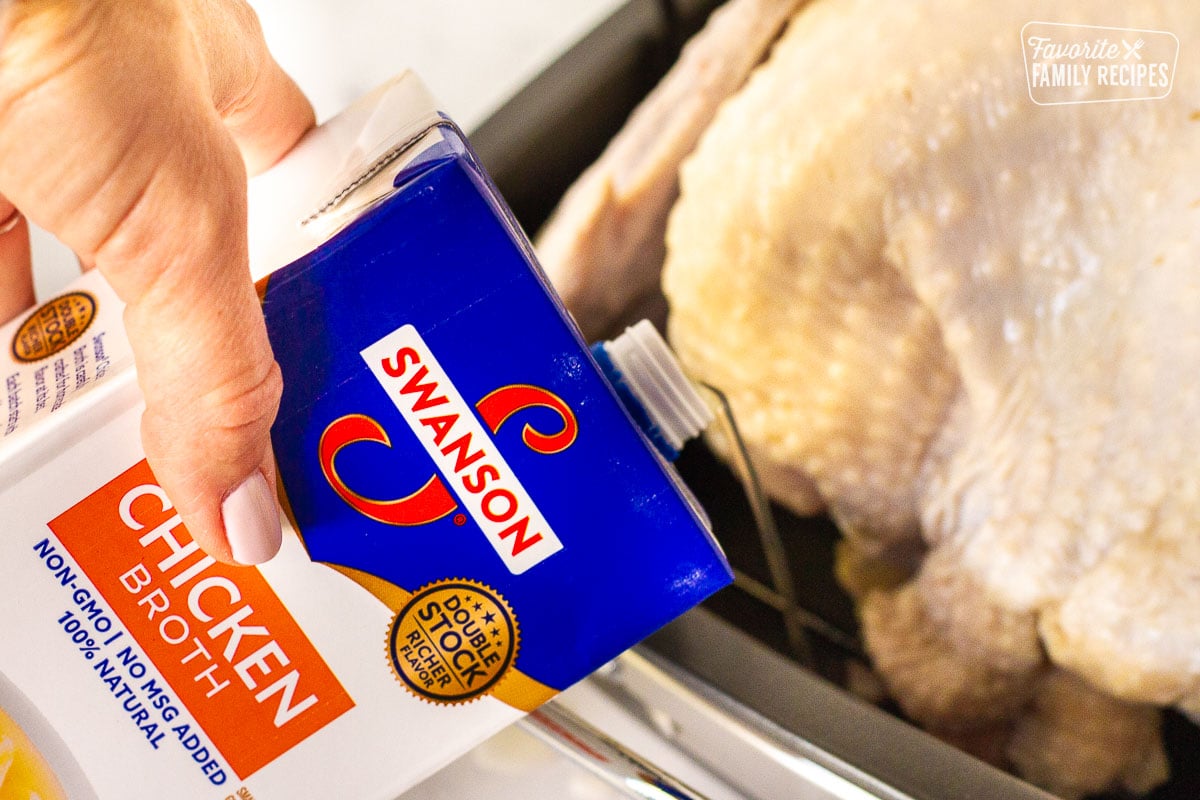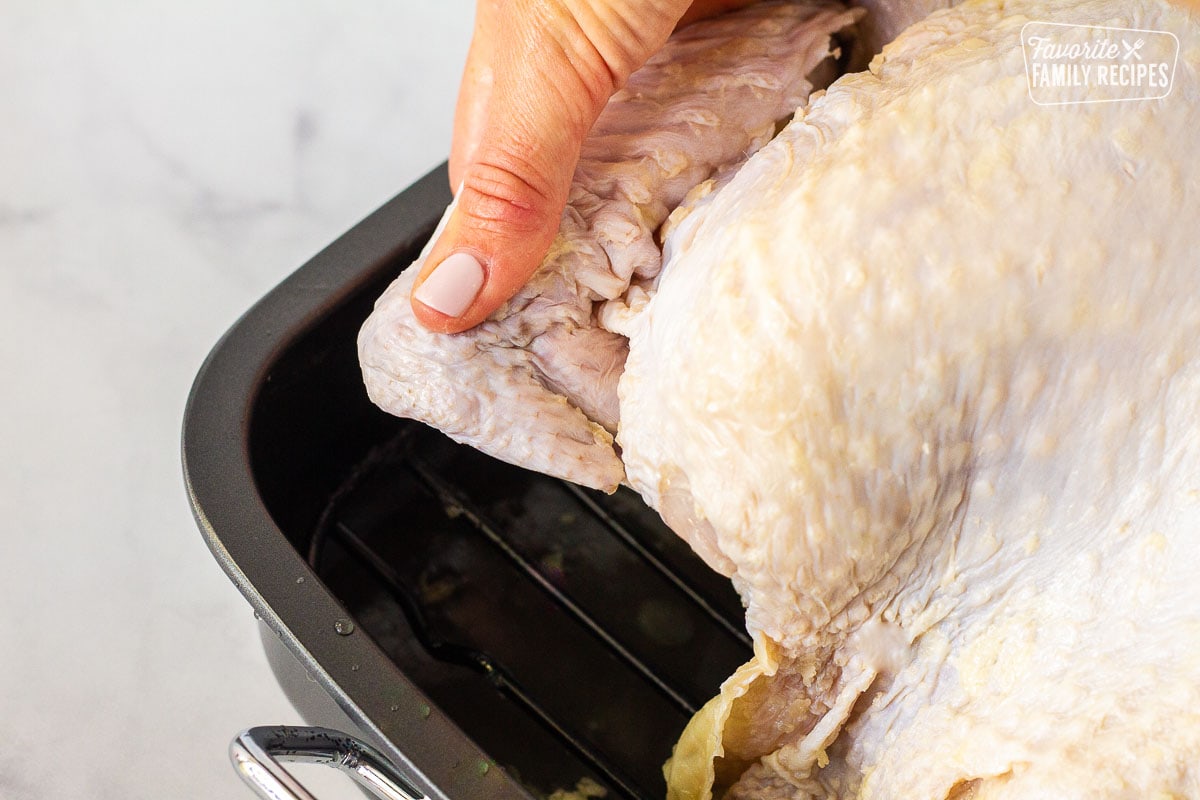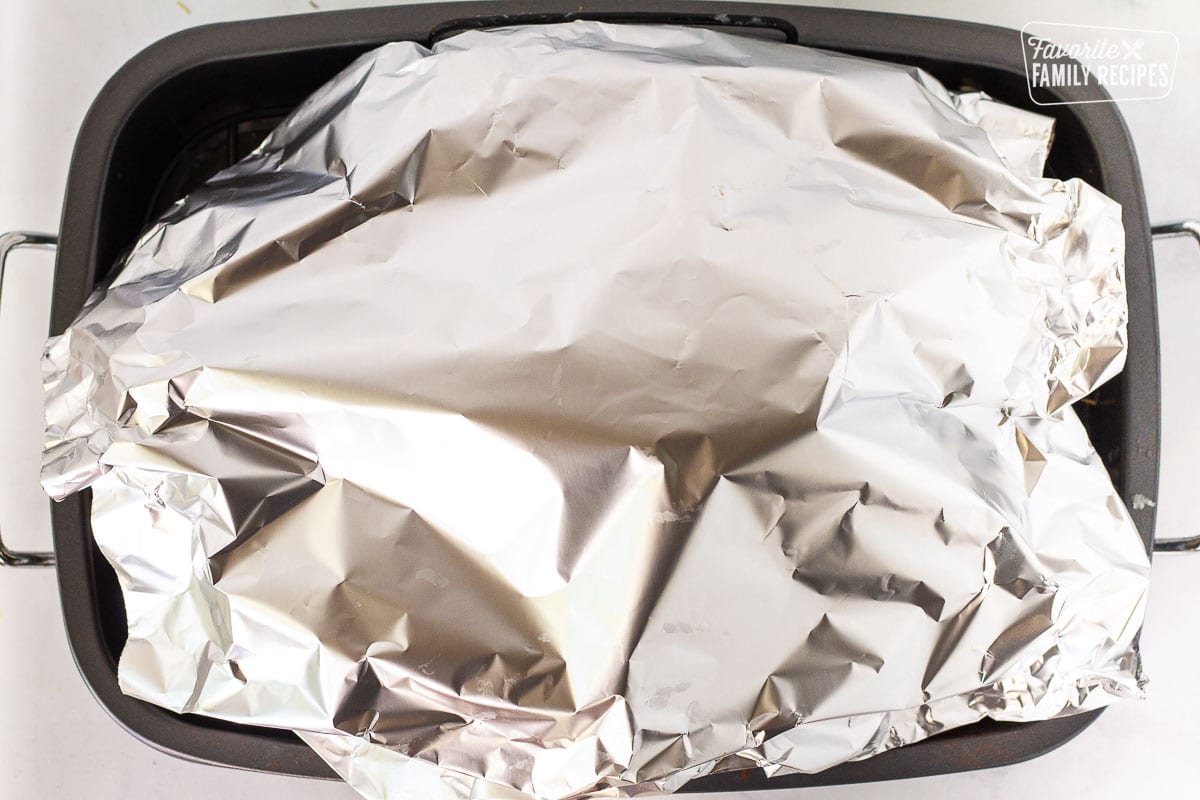Cooking a turkey for Thanksgiving dinner or a Sunday dinner doesn’t have to be overwhelming. With these simple steps, you can have a full turkey dinner, complete with mashed potatoes, gravy, and stuffing for any occasion without breaking a sweat! Whether it’s the first time or the tenth time you are cooking a turkey, there is something that can be slightly intimidating about it. Will it be cooked in time? Am I going to have enough turkey? Will it be dry? Take a deep breath and be assured that you can do this! Follow this recipe along with the guidelines we’ve included, and you will be placing a flavorful, moist, and tender turkey on the kitchen table for all to admire. To start off, here are some items to consider when purchasing a turkey, thawing a frozen turkey, and planning for cooking time.
How Many Pounds of Turkey Do I Need?
This is a key question to ask when preparing a turkey for Thanksgiving or a Sunday dinner. You definitely don’t want to run out of turkey during dinner, and you need turkey leftovers for turkey sandwiches, turkey pot pie, and turkey noodle soup, right? A good rule of thumb when buying a turkey, if you want leftovers, is 1 ½ pounds of turkey per person. This takes into account the weight of the bones, it’s not all meat weight. If you don’t want a lot of leftover turkey meat, estimate 1 pound of meat per person. I like leftover turkey, so if I’m serving 12 people at Thanksgiving dinner, I will buy an 18-pound turkey.
How long do I thaw a frozen turkey?
For food safety and thorough cooking, a turkey should be completely thawed before it is cooked. To slow thaw a turkey, place it in the refrigerator for 3-6 days prior to cooking. This is a great, safe way to thaw your turkey, and how we recommend thawing. The chart below shows when to thaw your turkey for Thanksgiving 2023:
How To Quick Thaw a Turkey (aka Cold Water Thawing)
We have all waited until the last minute to thaw the turkey (or forgot to thaw it) before cooking. I have done it (several times actually) and we get comments and emails every year from others who have done it as well. Don’t worry, there is a quick-thaw solution that the USDA actually approves of. This is the “Cold Water Thaw”. To do this you will want to allow 30 minutes of thaw time per pound of turkey. Here is what the USDA recommends: “First, be sure the turkey is in a leak-proof plastic bag to prevent cross-contamination and to prevent the turkey from absorbing water, resulting in a watery product. Submerge the wrapped turkey in cold tap water. Change the water every 30 minutes until the turkey is thawed. Cook the turkey immediately after it is thawed.”
COLD WATER THAWING TIMES
4 to 12 pounds — 2 to 6 hours 12 to 16 pounds — 6 to 8 hours 16 to 20 pounds — 8 to 10 hours 20 to 24 pounds — 10 to 12 hours
Read More: How to Thaw a Turkey Safely
Should I Rinse My Turkey Before Cooking?
In short, NO — do NOT rinse your turkey before cooking. According to the USDA, rinsing your turkey is not only unnecessary but could actually do more harm than good. Rinsing your turkey can splash and spread bacteria into your sink and on your countertops. Instead, drain the excess juices from the turkey down the sink and then pat the turkey dry with paper towels.
Brining The Turkey
Brining a turkey is an optional, yet popular technique that can enhance the turkey’s flavor, moisture, and tenderness. This is achieved through the process of osmosis, where the salt in the brine solution helps the turkey absorb extra moisture and seasoning. The salt also breaks down muscle proteins, resulting in a more tender and juicy meat. If you would like to brine your turkey, the best wet brining resource we have found comes straight from the USDA. They have great tips on how to safely brine a whole turkey.
Popular Turkey Seasonings and Variations
For this recipe, we like to use plenty of butter (you can use salted or unsalted butter) and traditional seasonings such as parsley, sage, rosemary, and thyme. Remember to pat the turkey very dry before adding butter and seasonings so they adhere to the turkey while cooking. You can also throw some lemon or orange slices onto the turkey while it is roasting to give it a little citrus-y boost. Here are some more ideas for seasoning your turkey:
Classic Seasoning: A mixture of salt and pepper, herbs, garlic, citrus and onion make for a classic and traditional seasoning mix. We also like to include a little paprika to the mix for a beautiful color and a smoky flavor. Cajun: A mix of paprika, cayenne, oregano, and thyme for a spicy kick. You can also use a cajun seasoning mix such as Tony Chachere’s Cajun Seasoning. Italian: A blend of basil, oregano, rosemary, and garlic for a Mediterranean twist. Fruit-Infused: Combine herbs with fresh fruit like apples, pears, or cranberries for a fruity, herbal infusion. Maple Glaze: Brush the turkey with a maple syrup and Dijon mustard glaze for a sweet and tangy crust. Soy and Honey: A mixture of soy sauce, honey, ginger, and garlic for an umami-rich, slightly sweet turkey.
Turkey Cooking Methods and Techniques
There are several cooking methods for cooking a turkey, each with its unique flavor and texture. Here are some common methods:
Cooking a Turkey in an Electric Roaster
If you cook your turkey in an electric roaster, it is going to cook faster. Depending on your roaster, it may cook up to 2 hours faster. This is due to the heat source being much closer to the turkey. Check the owner’s manual of your roaster to get the most accurate roasting times. Don’t forget to check the turkey with a meat thermometer when it is about half way through cooking to see how it is coming along. Try to only lift the lid as much as needed to avoid too much heat escaping.
What temperature to cook a turkey?
Low and slow is the name of the game when it comes to cooking a turkey. A lower heat and longer cooking time results in tender, juicy turkey meat that is worth the wait. We’ve found that 325 degrees Fahrenheit is ideal for a Thanksgiving turkey. See the chart below for cooking time.
How Long to Cook a Turkey
This is the crucial question when preparing Thanksgiving dinner! Timing is everything! The cooking time depends on the size of the turkey, and it’s important to remember that all ovens are not created equally. Generally, you cook a turkey at 325 degrees for 15-20 minutes per pound but this isn’t always perfectly accurate. This is why a meat thermometer is essential. This chart will help give you an idea of how long to cook your turkey but keep in mind that all ovens are not created equal. Keep in mind that the turkey will also need to rest once it is out of the oven for 20-30 minutes. This allows the juices to be distributed throughout the turkey before it is sliced. This will give you time to bake the rolls, make the gravy, and finish up side dishes.
Approximate Turkey Cooking Times Chart from USDA
Meat Thermometer Guidelines for the National Turkey Federation
This is the recommendation from the National Turkey Federation for meat thermometer placement and internal temperatures:
Meat Thermometer Placement in a Turkey
An important part of using any thermometer is the proper placement in the turkey.
Insert the thermometer 2 ½ inches into the deepest, thickest part of the breast or into the inner thigh near the turkey breast. Make sure the thermometer does not touch a bone. When inserting the thermometer in the turkey breast, insert it from the side. The thermometer is easier and more accurate this way than when inserted from the top.
Internal Temperature for Turkey
The internal temperature should reach:
165 degrees F to 170 degrees F in the breast 175 degrees F to 180 degrees F in the thigh 165 degrees F in the center of the stuffing.
Carving the Turkey
Carving a turkey can seem daunting, but with the right technique, it becomes a manageable task. Here’s a step-by-step guide on the best way to carve a turkey:
Tools You’ll Need:
A sharp carving knife: A long, thin-bladed knife works best for carving. You can also use an electric carving knife. A carving fork: This will help stabilize the turkey as you carve. A cutting board: Choose a large, stable surface for carving.
Step 1: Prepare the Turkey
Before carving, let the roasted turkey rest for about 15-20 minutes. This allows the juices to redistribute, keeping the meat moist and making it easier to carve.
Step 2: Remove the Legs and Thighs
Step 3: Carve the Breast Meat
Step 4: Remove the Wings
If desired, you can remove the wings by cutting through the joint where they connect to the body. This step is optional.
Step 5: Slice the Dark Meat
Step 6: Arrange and Serve
Arrange the carved turkey meat on a serving platter, garnish with fresh herbs or other desired accompaniments, and serve.
Carving a turkey is a skill that improves with practice, so don’t be discouraged if your first attempt isn’t perfect. The key is to take your time, use steady, even strokes, and always carve against the grain for the most tender and flavorful slices.
More Tips For Cooking a Turkey
Use a good roasting pan. We use a Magnalite roasting pan. It’s what our mom has used for years. We call it the “magic pot”. Any deep-walled, heavy duty roasting pan will work great though. Use a roasting rack. This will make it so your turkey isn’t sitting down in the juices. You don’t want to have a turkey with a soggy bottom. A roasting rack will also make it so the turkey gets a good “crackling” all the way around. If you can’t cover the turkey with a lid, cover with aluminum foil. Use an electric knife for carving. It just makes it so much easier to carve. If you don’t have an electric knife, be sure to use a very sharp knife so you don’t tear up the meat. If you want to add vegetables in with your turkey, you can add them before you place the turkey in the oven but this could make them soggy. We usually don’t add vegetables to our roasted turkey, but if you prefer adding veggies such as carrots, onions, celery, or even potatoes, we recommend adding them only an hour or two before the turkey is finished cooking.
How to Make Turkey Gravy
What is a delicious roasted turkey without the gravy? The gravy is the icing on the cake when it comes to turkey. The flavorful drippings from the turkey are what make the gravy! Use our Mom’s Famous Turkey Gravy recipe for the best tasting turkey gravy made from turkey drippings.
What To Serve With Turkey
Whether you are cooking a turkey for Thanksgiving or for Sunday dinner, you can’t go wrong with any of these delicious side dishes. Be sure to check out out ENTIRE collection of Thanksgiving Side Dishes AND Thanksgiving Desserts! Read Next: ALL the BEST Thanksgiving Side Dishes
Homemade Mashed Potatoes
Orange Cranberry Sauce
Dinner Rolls
Sausage Stuffing
Here is a breakdown of some of the most commonly asked questions about cooking a turkey if you prefer a quick answer. If you need more in-depth information, you can find more detailed answers in the post above.
Storing and Reheating the Leftovers
When cooking a whole turkey, we almost always have leftovers! To store, first, let the turkey cool to room temperature within two hours of cooking, then refrigerate it in airtight containers or resealable plastic bags. Leftover turkey will stay good for 3-4 days in the fridge and up to 4 months in the freezer. When reheating, you can use an oven or microwave. In the oven, cover the turkey with foil to prevent drying and reheat at a low temperature (around 325°F) until it’s warmed through. For a microwave, cook portions for 30 seconds at a time until heated through.
Turkey Leftover Recipes
We find ourselves eating the leftovers for DAYS after Thanksgiving. Whether it be a simple turkey sandwich or a fancy turkey pot pie, we love finding creative ways to use up that leftover turkey! Here are some of our favorite recipes using the leftovers:
How to Cook a Turkey
Thanksgiving Sandwich
Thanksgiving Leftover Casserole
Turkey Pot Pie
Turkey Sandwich with Brie
We want to hear from you! Please leave a review. Rate and Review
